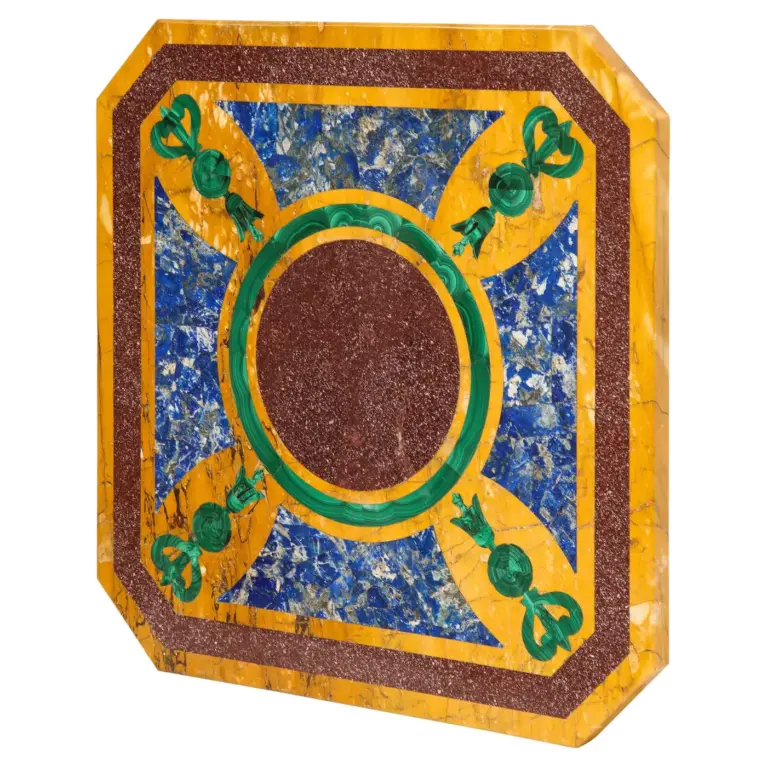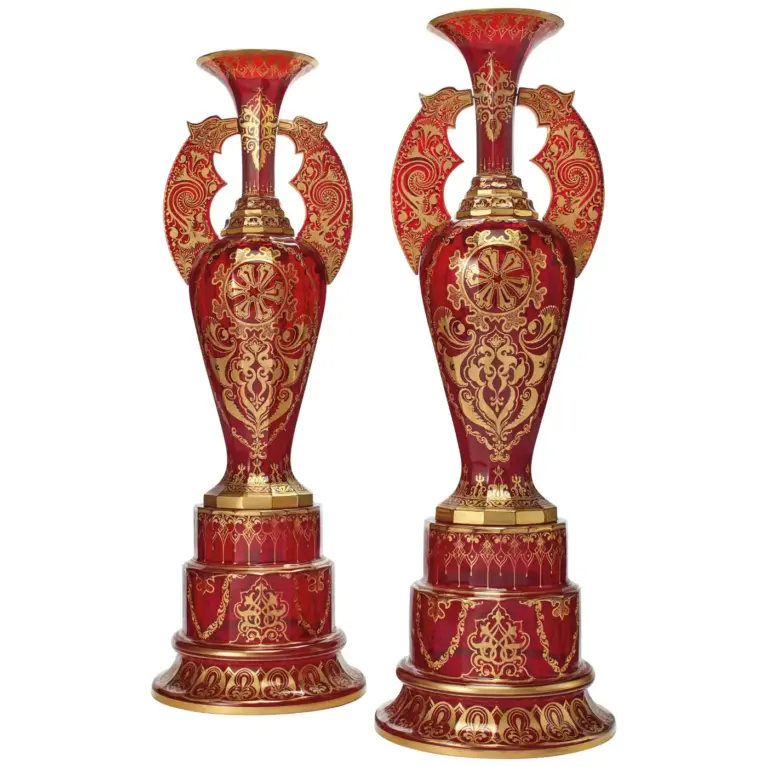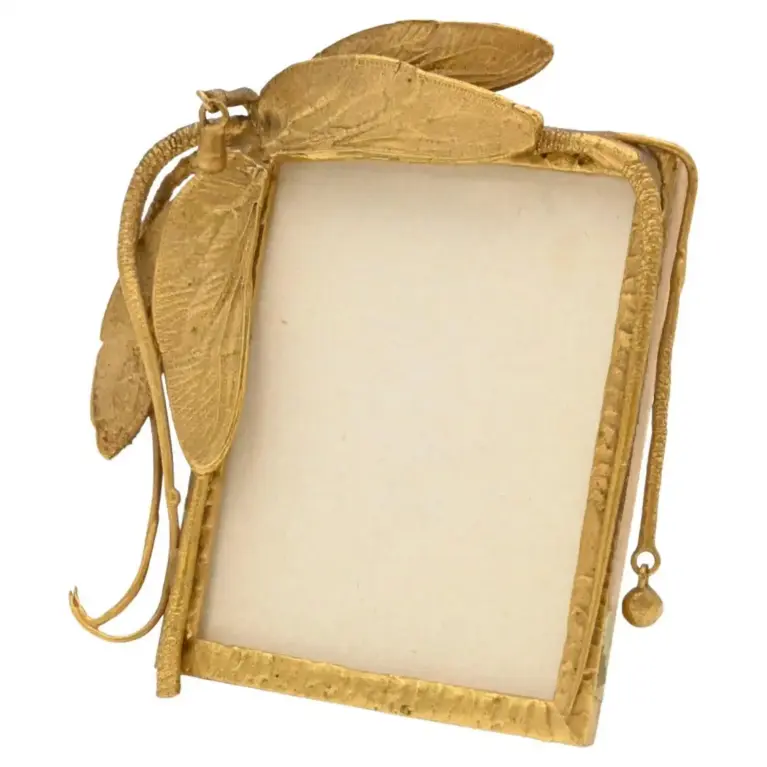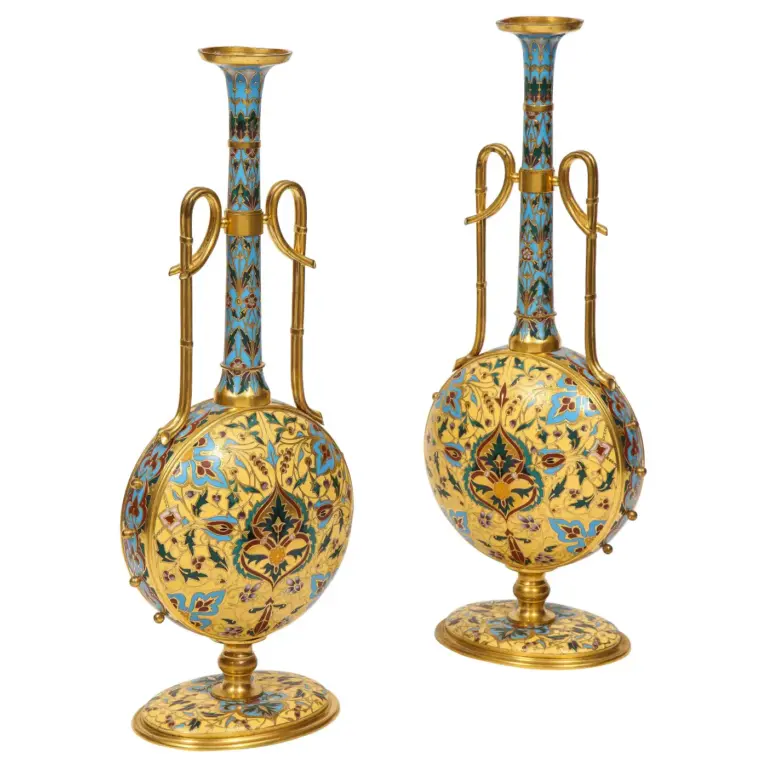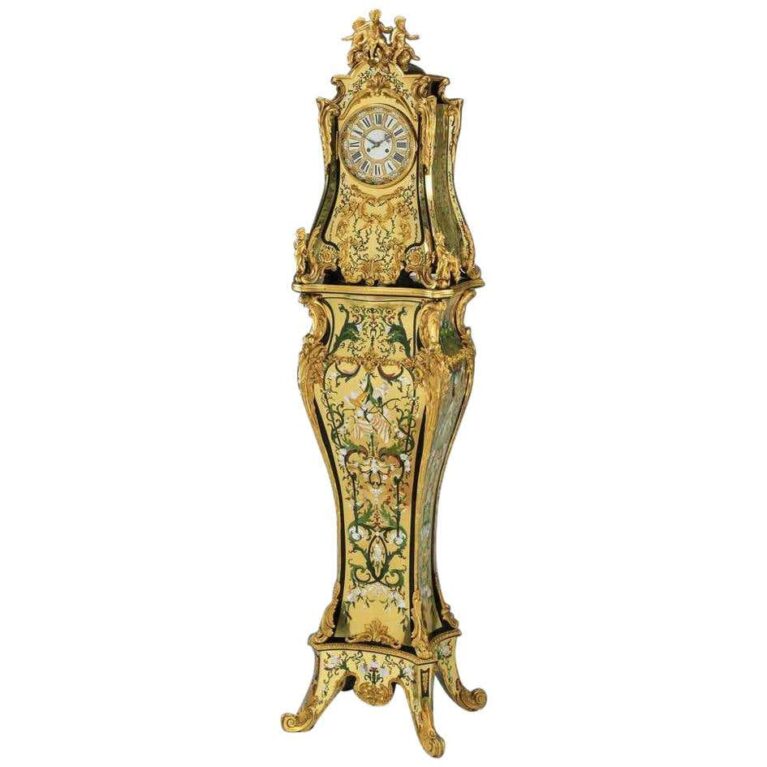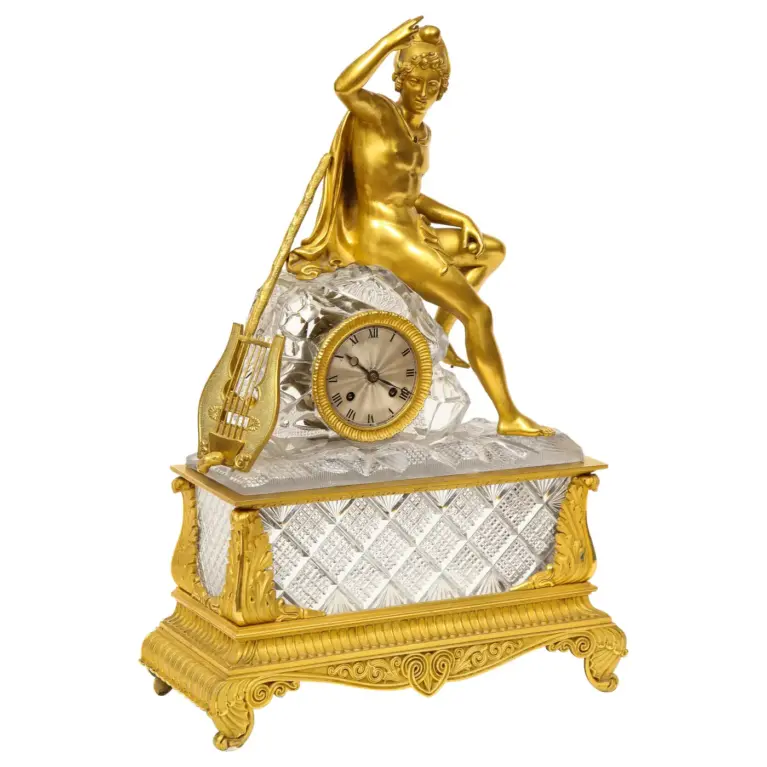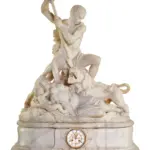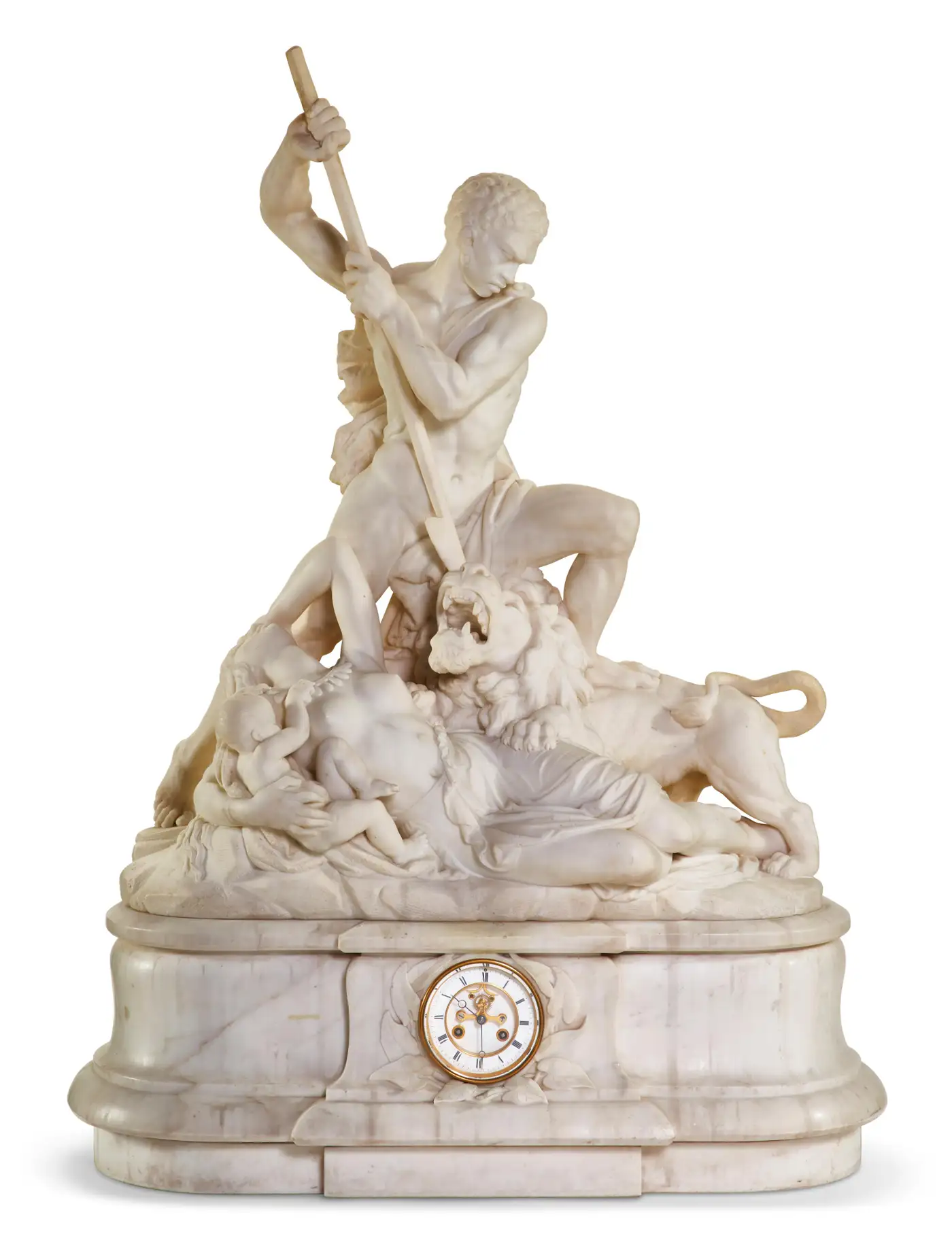
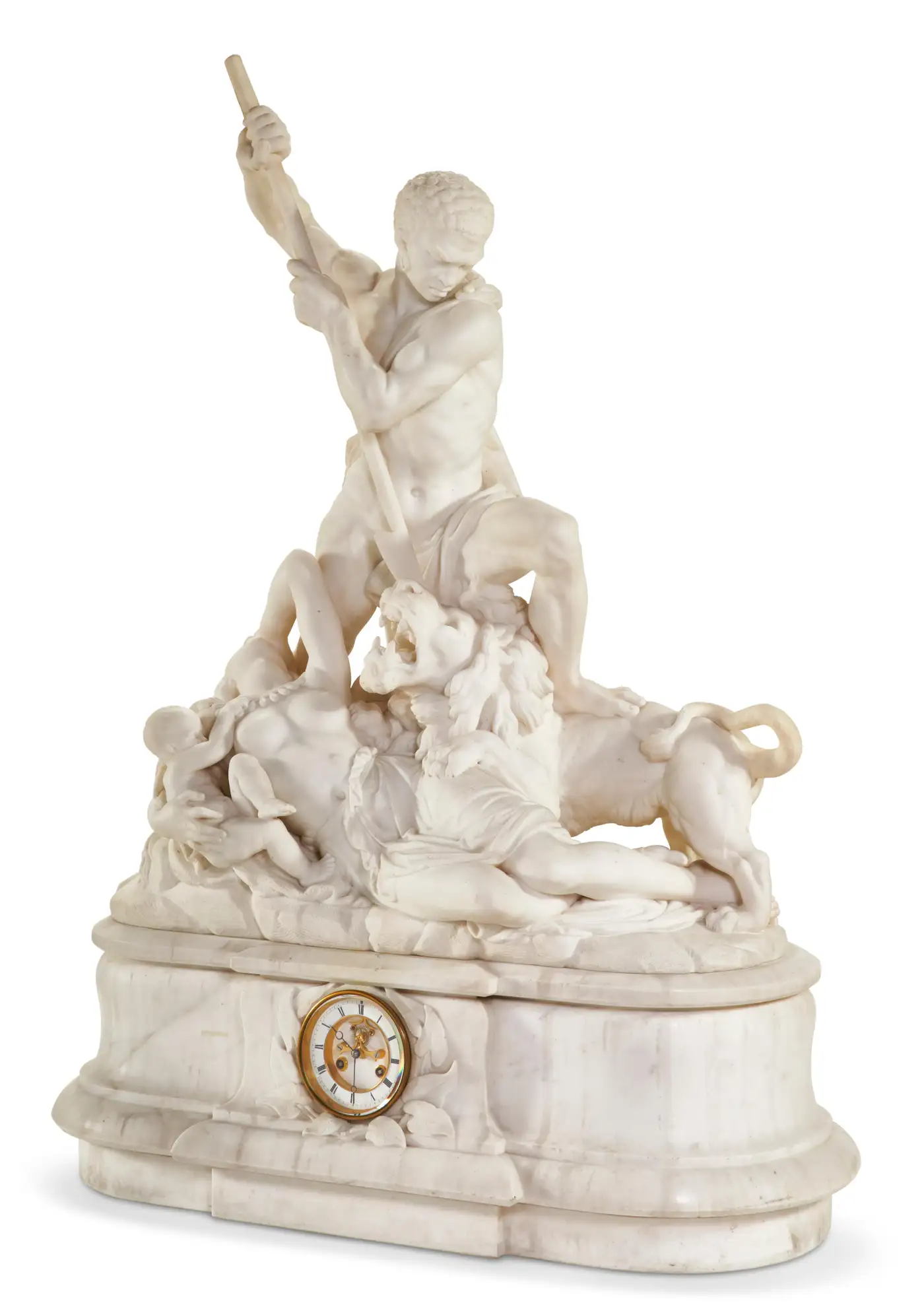
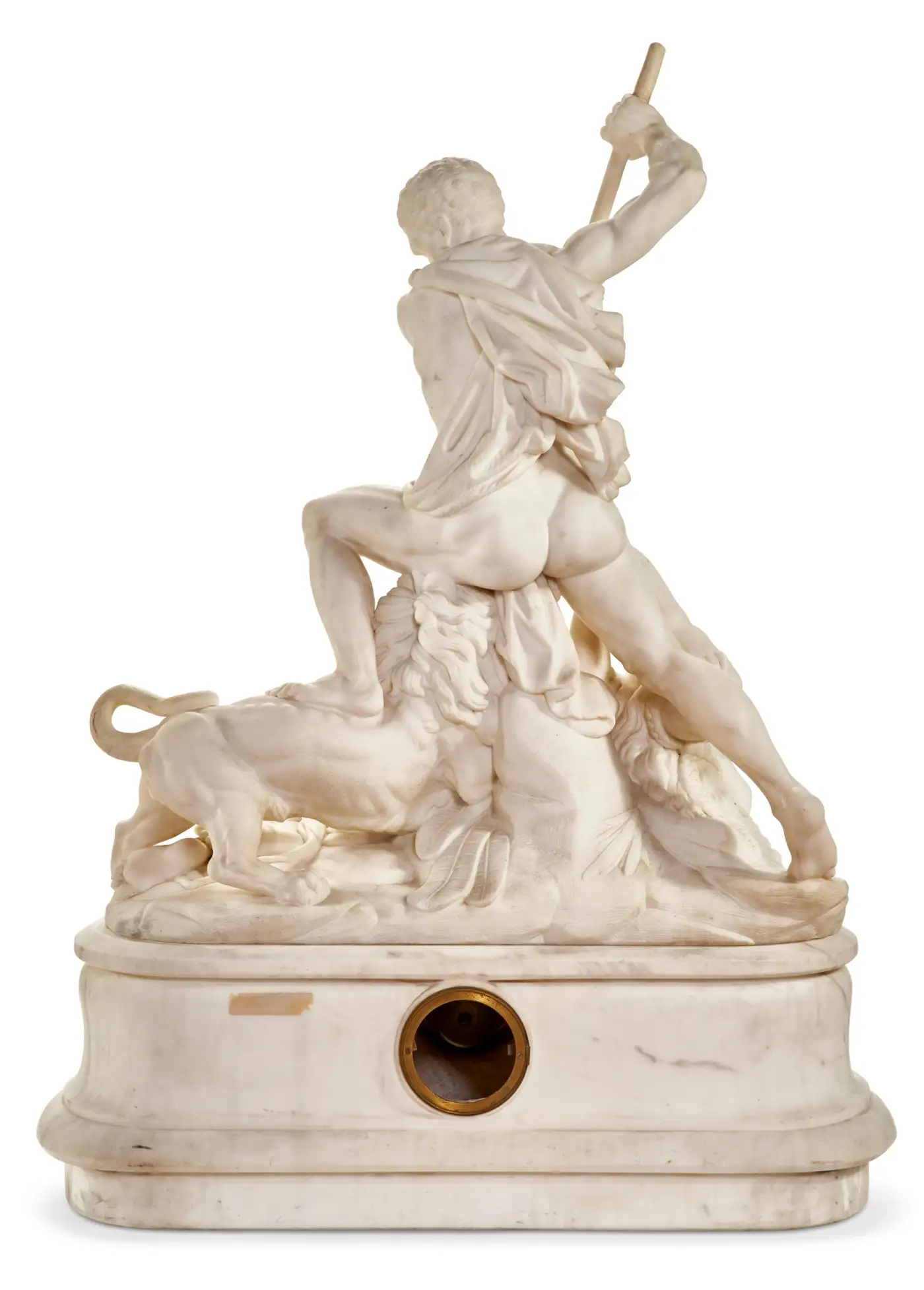
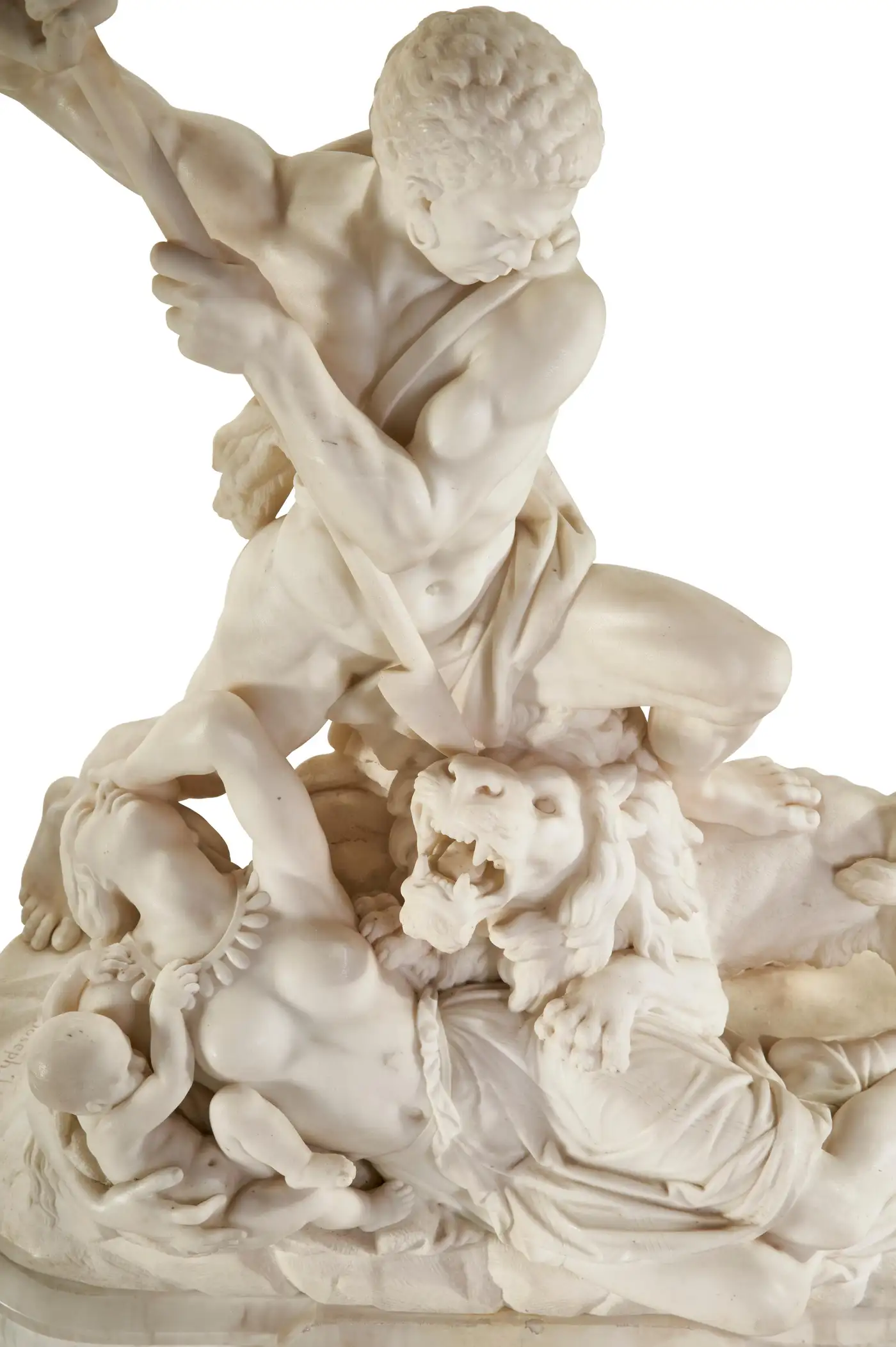
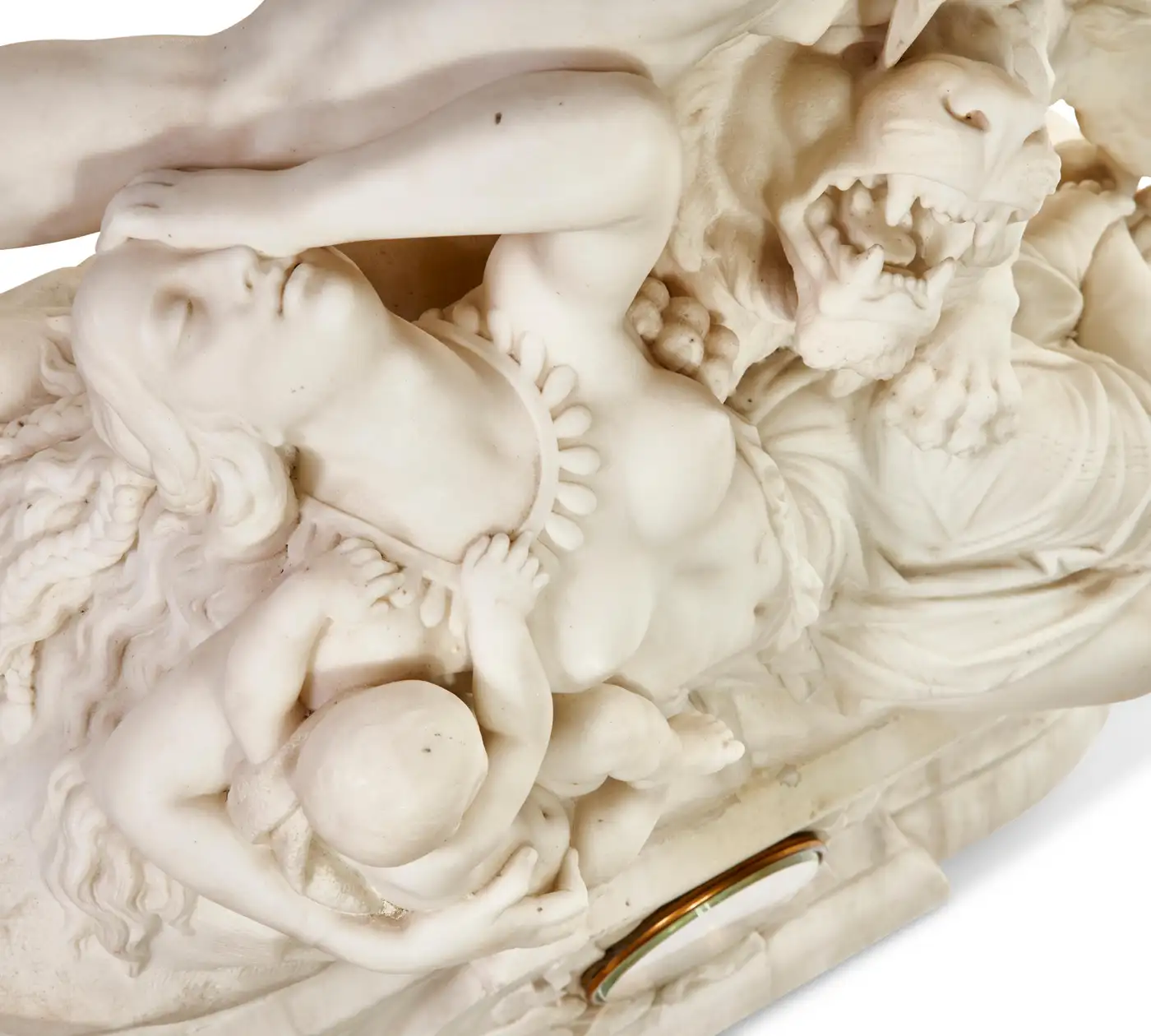
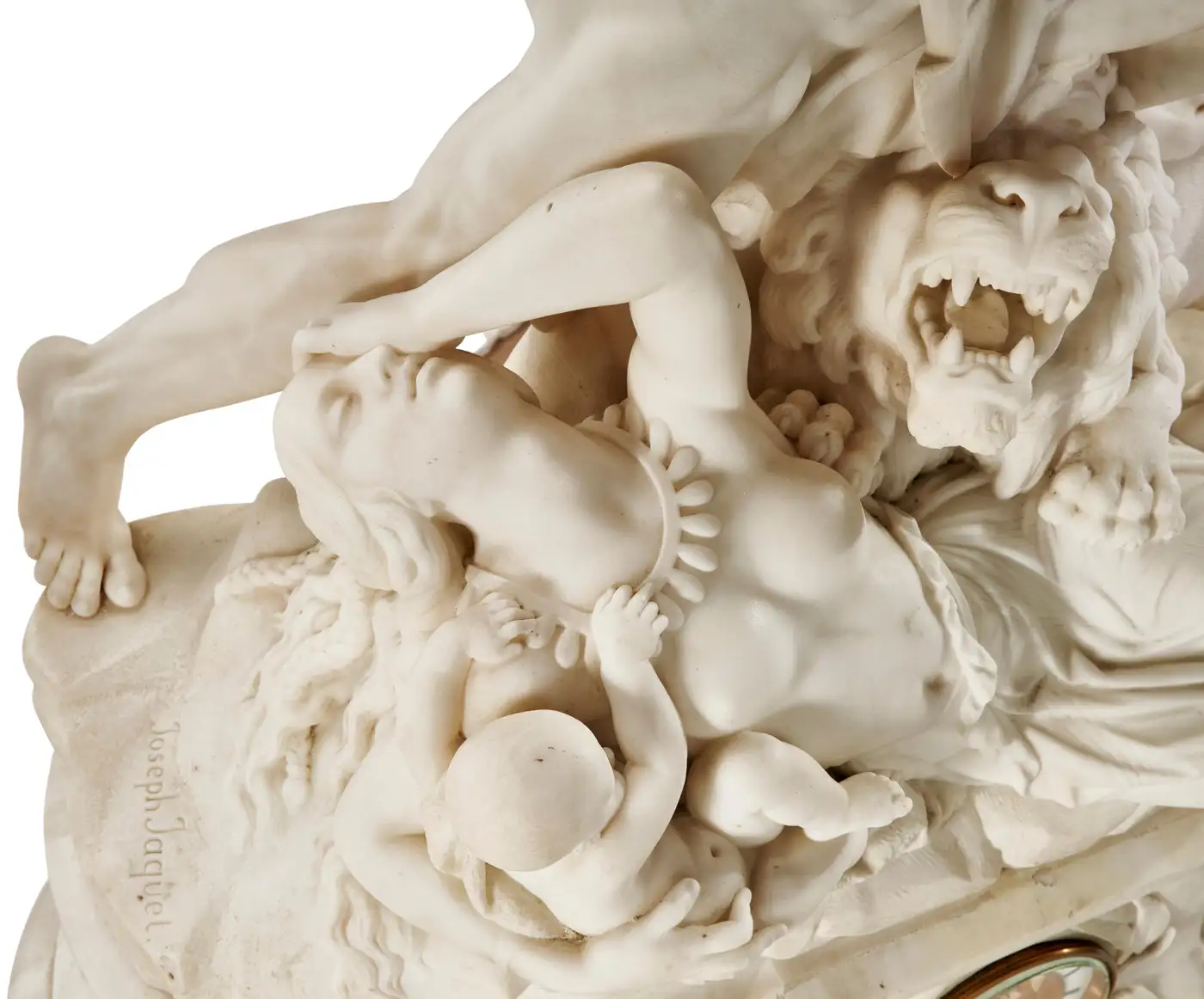
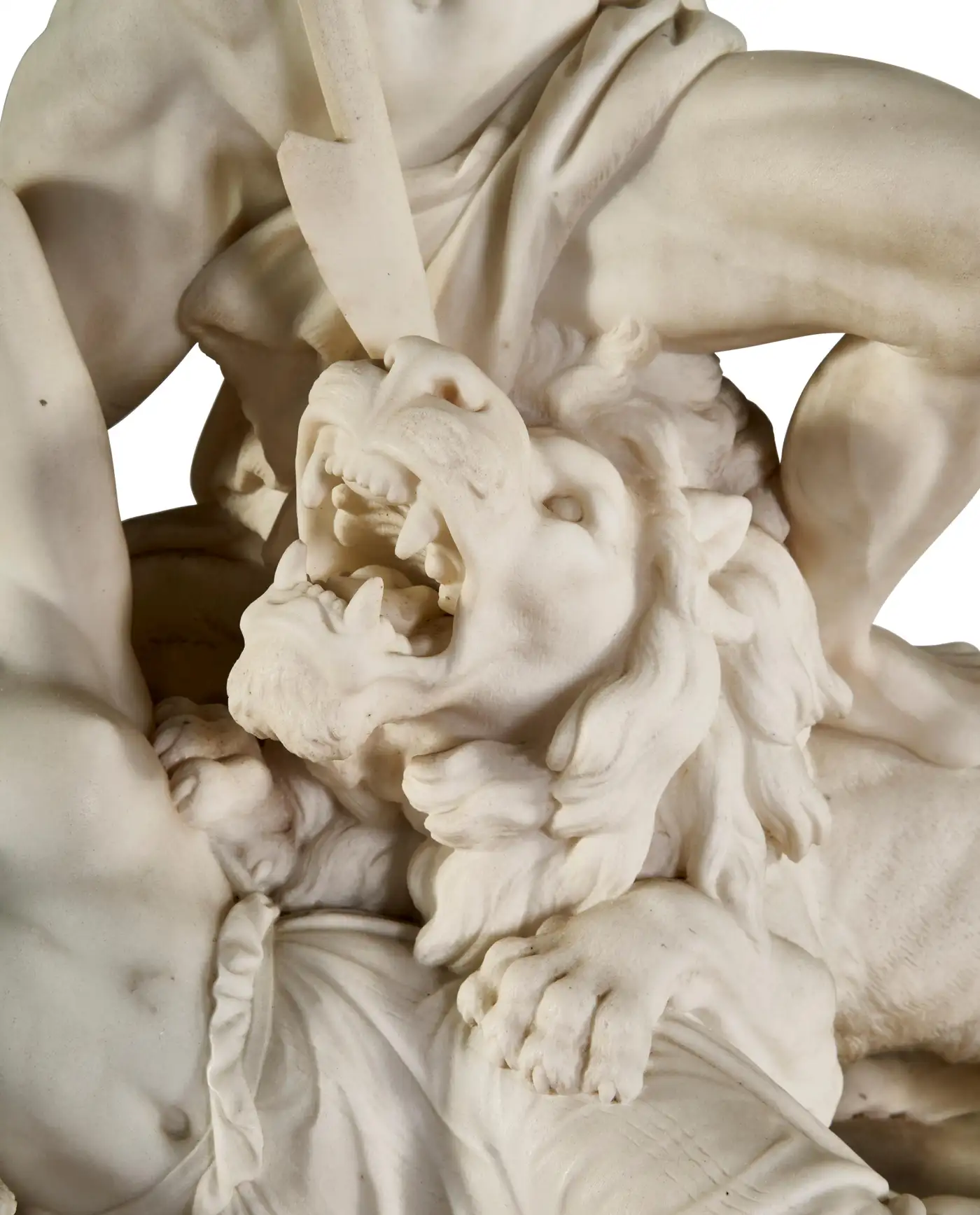
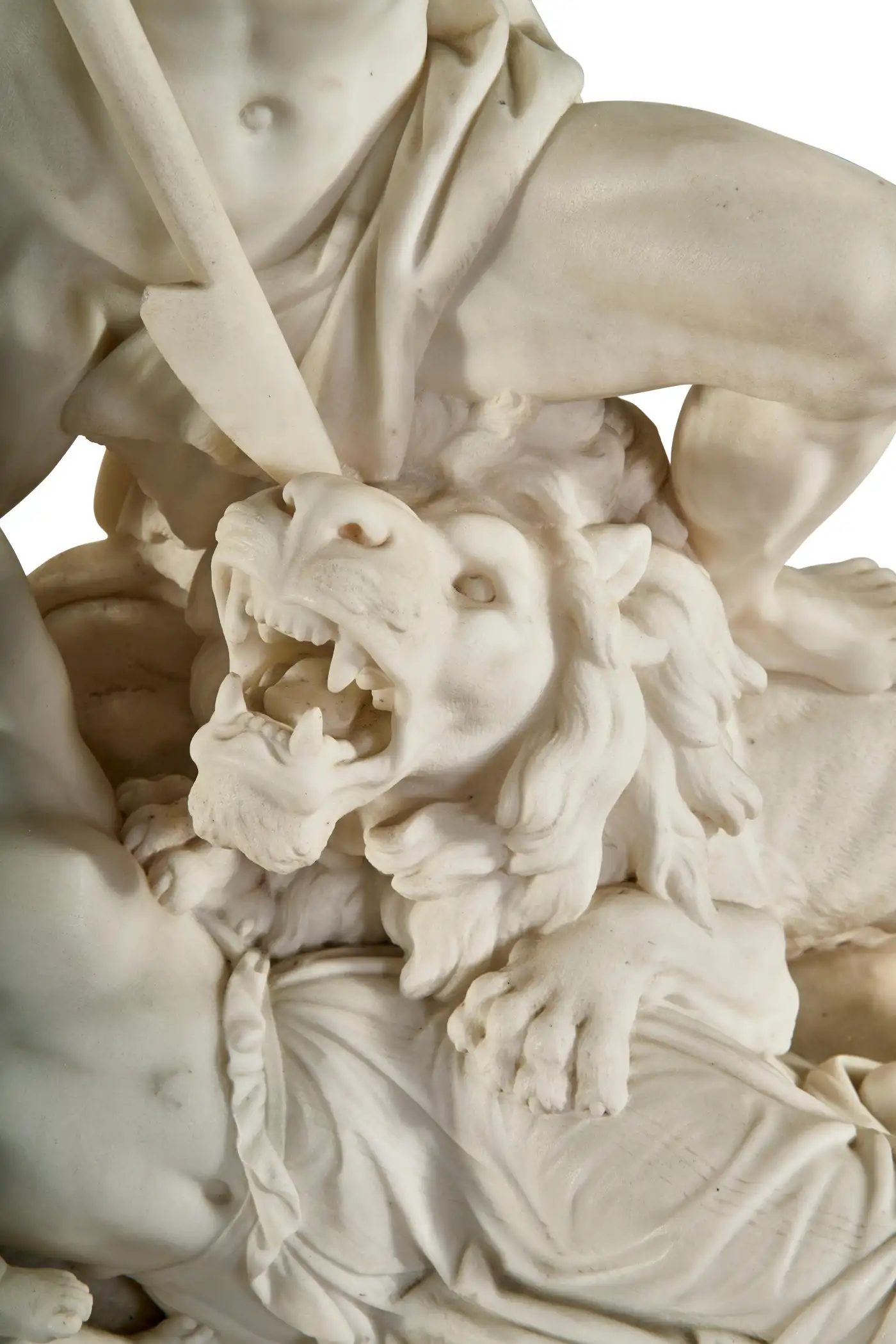
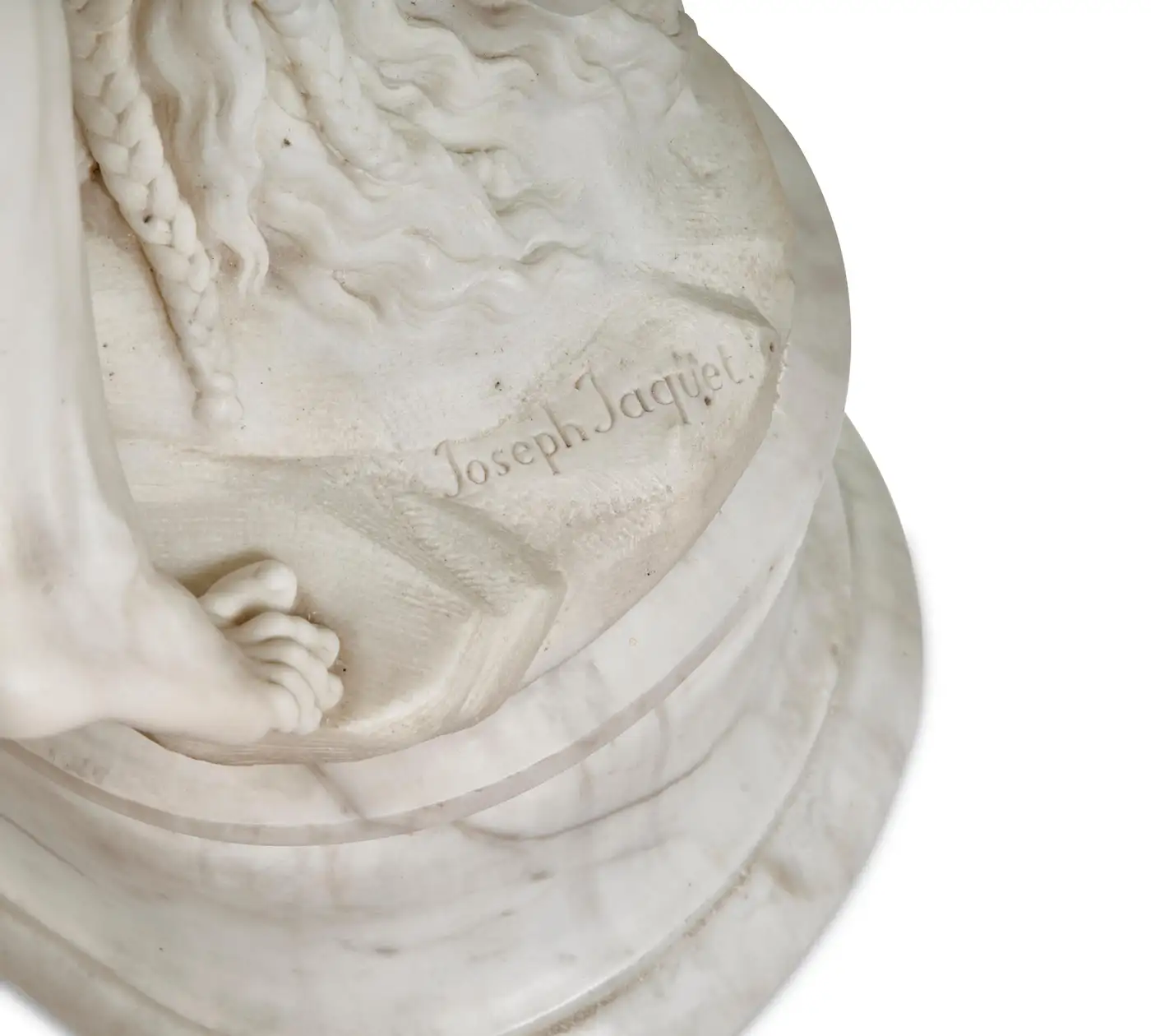
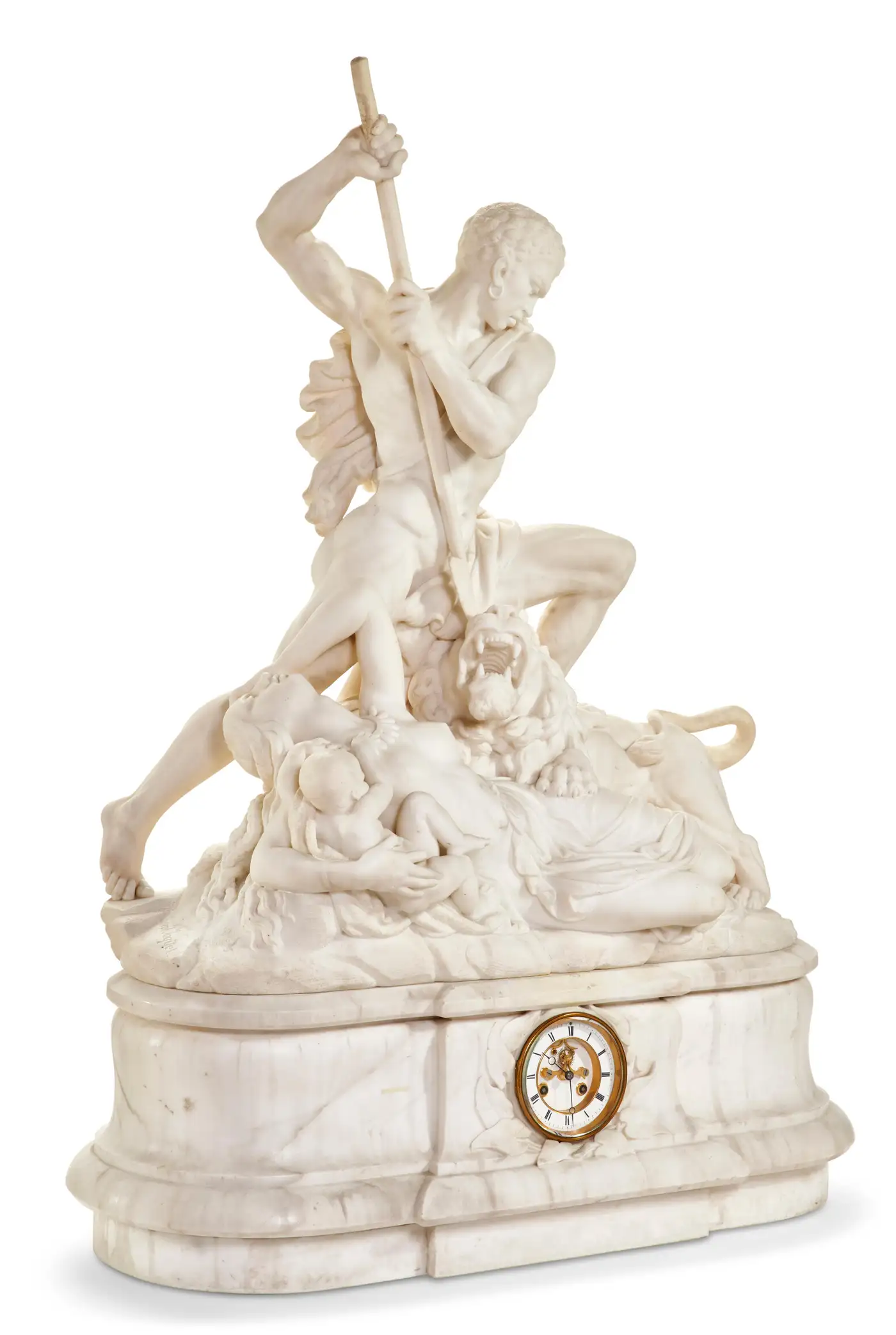
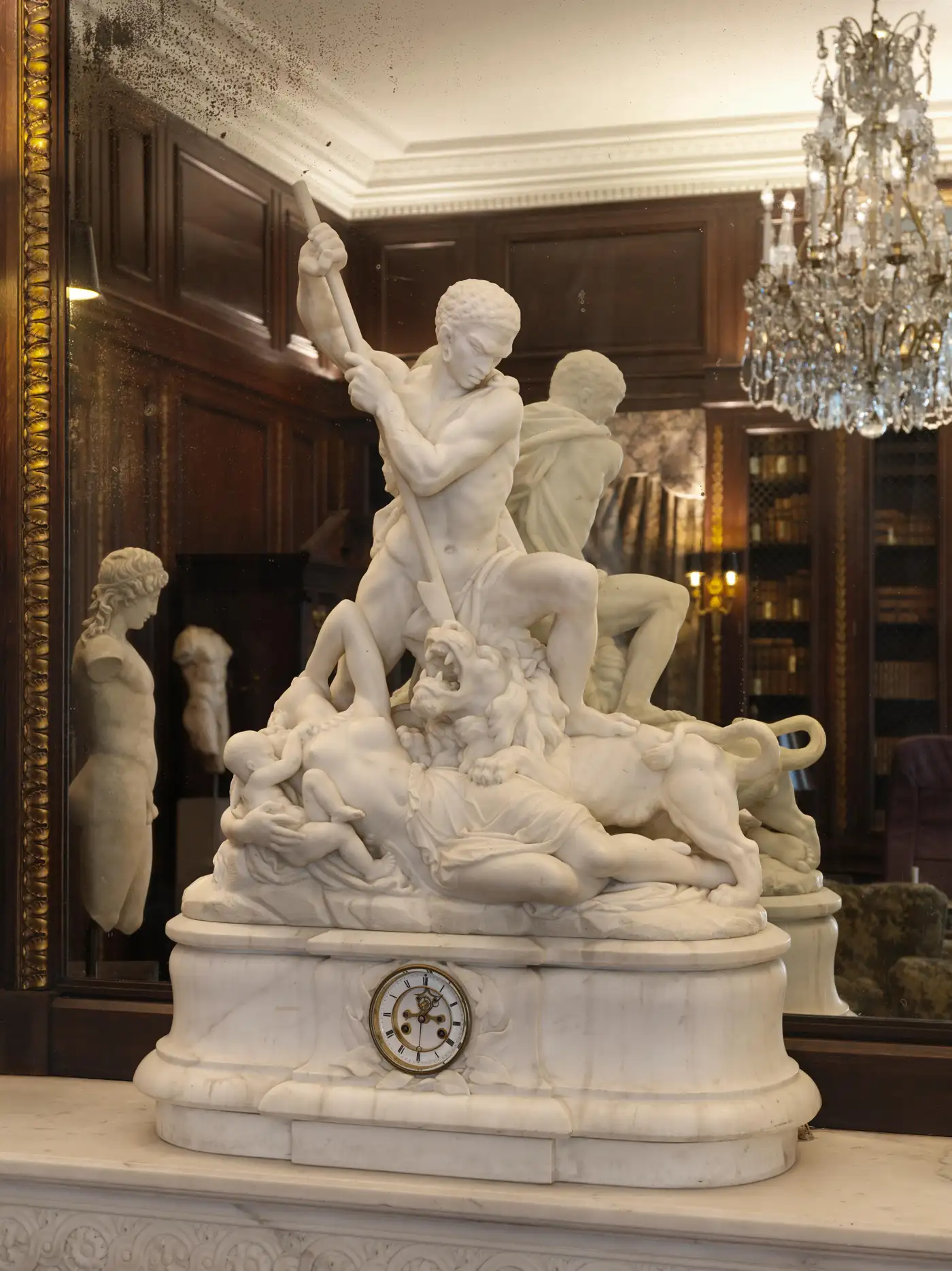
An Exceptional White Marble Figural Sculpture Clock, “A Nubian Slaying The Lion”C. 1860
- An Exceptional and Monumental White Marble Figural Sculpture Clock, “A Nubian Slaying The Lion” by Jean-Joseph Jacquet (Belgian, 1822–1898), circa 1860
- This extremely impressive white marble carved figural group depicts a Nubian defending a woman and child lying on the ground against the attack of a lion. All carved from a single slab of marble. The sculpture sits on the original white marble clock that it was made for. This was definitely a private commission piece by a Royal family in Belgium for Joseph Jacquet. Signed ‘Joseph Jacquet’ to left side of base.
- A truly impressive and one of a kind piece.
Product Details
34″ high x 32″ wide x 14″ deep
In overall very good condition and ready to place. With normal wear consistent with age and use. Repairs to the top of his spear and to the lion’s tail. The clock base with minor nicks and ‘nibbling’ to the lower edge. We cannot comment on the functioning of the clockworks, which should be examined by a restorer prior to use. One key, one pendulum.
Jean Joseph Jacquet, sometimes written Joseph Jacquet, (30 January 1822 – 9 June 1898) was a Belgian sculptor. He was born in Antwerp in Belgium and was the son of a baker. He studied with Guillaume Geefs at the Brussels Académie Royale des Beaux-Arts and was the friend of Peter Ludwig Kühnen (1812–1877), a painter originating from Aachen, specialised in painting romantic landscapes.
He called from Antwerp to Brussels his brother Jacques (1830 – 1898) who assisted him throughout his lifetime. Jacques actively took part in sculpture by his own productions for the Brussels art salons of 1843, 1854, 1860, 1866, 1872 and 1873.
For the 1842 Brussels Art Salon. Joseph Jaquet exhibited a marble bust, three plaster busts, a Moses Saved from the Waters and a Meditating Saint Paul which brought him notoriety.
His contribution for the 1845 Salon was more important and especially a model for a bronze statue of Froissart for Chimay but he acquired a definitive notoriety in 1854 with The Golden Age.
In 1864, he secured his first commission in Amsterdam: The Victory for the Paleis voor Volksvlijt, then a second commission for the decoration of the national monument in The Hague Willemspark.
The equestrian statue of Baldwin I of Constantinople was created in 1868 in Mons, then the pediment and lions on the Brussels Stock Exchange in 1872.
In 1879, Joseph Jaquet designed a statue of Louise of Orléans, first Queen of the Belgians: this statue was on the Place d’Armes in Philippeville then was moved to the old École moyenne, Namur street.
He was a professor at the Brussels Académie Royale des Beaux-Arts and a master of Charles Samuel.
He died in 1898 in Schaerbeek in the Brussels-Capital Region.

| Period: | 19th Century |
| Origin: | Belgium |
| Type: | Sculptures |
| Depth: | 13 in (33.02 cm) |
| Width: | 32 in (81.28 cm) |
| Height: | 34 in (86.36 cm) |
| Creator: | Jean-Joseph Jacquet |
| Creation Year: | C.1860 |
| Medium: | Marble |
Viewers Also Liked
Newsletter
- tel : 917.686.9732
- -
- mail : [email protected]
- © copyright - Solomon Treasure

